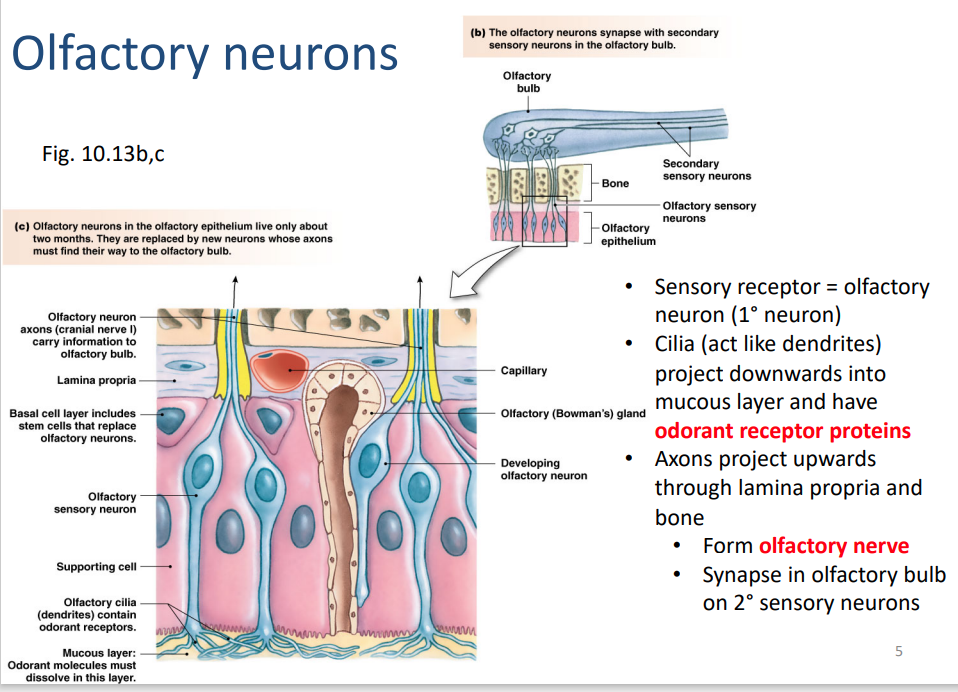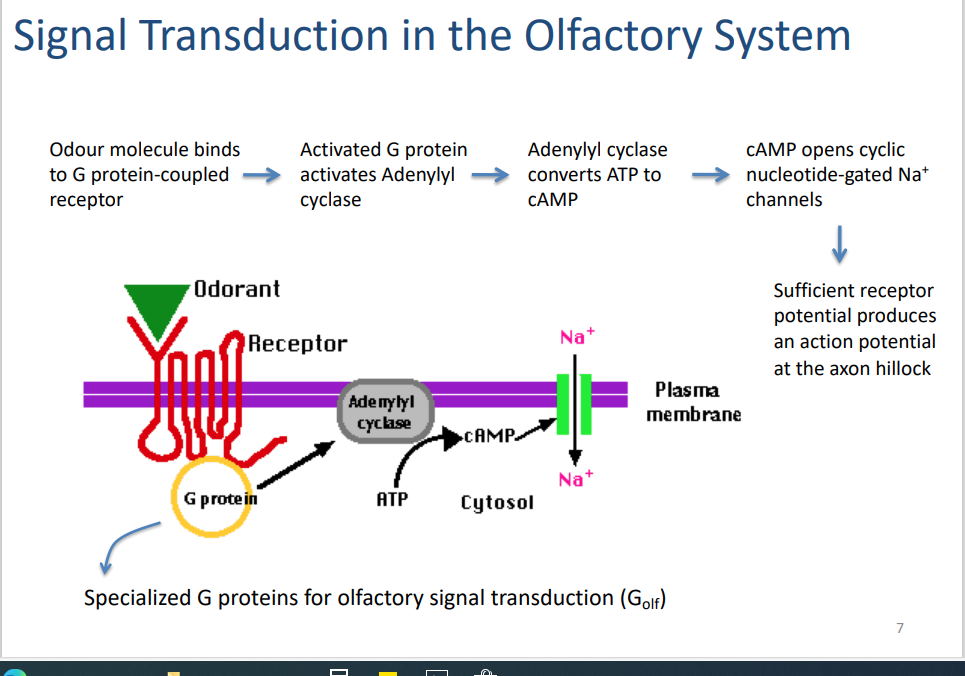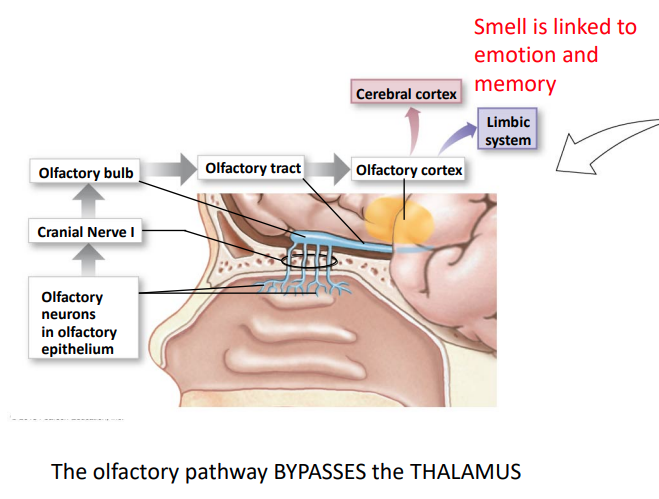lecture 14-sensory II chemoreception and auditory system
1/13
Earn XP
Name | Mastery | Learn | Test | Matching | Spaced |
|---|
No study sessions yet.
14 Terms

Anatomy of Olfactory neurons
Cilia
(act like dendrite points downward) into mucous layer
have odorant receptor protein
Axon
project upwards through the ethmoid bone
synapse in olfactory bulb on 2th sensory neuron
signal transduction in the Olfactory system
odor molecule binds to G protein-coupled receptor
activated G protein (GOIF) activates Adenylyl cyclase
AC converts ATP to cAMP
cAMP opens cyclic nuclotide-gated Na channel
sufficient receptor potential produces Action potential at the axon hillock

Olfactory Sensory signal Pathway
olfactory neuron → Cranial Nerve I → Olfactory tract → olfactory cortex → (both) cerebral cortex and limbic system
smell is linked to emotion and memory

how many taste cell in one taste bud?
50-150 cells
characteristic about tase cell
taste cells are non-neuronal (specialized cell) , each is sensitive to a particular "tastant ligand”
tase cells are polarized
receptor region at apical membrane (facing the lumen)
communicates with primary sensory neuron at basal membrane
intracellular signal pathway is different for each type of taste cell.
what are the types of taste cell ?
Type I support cells
Type II receptor cell
Sweet, umami, bitter
Type III
Sour
